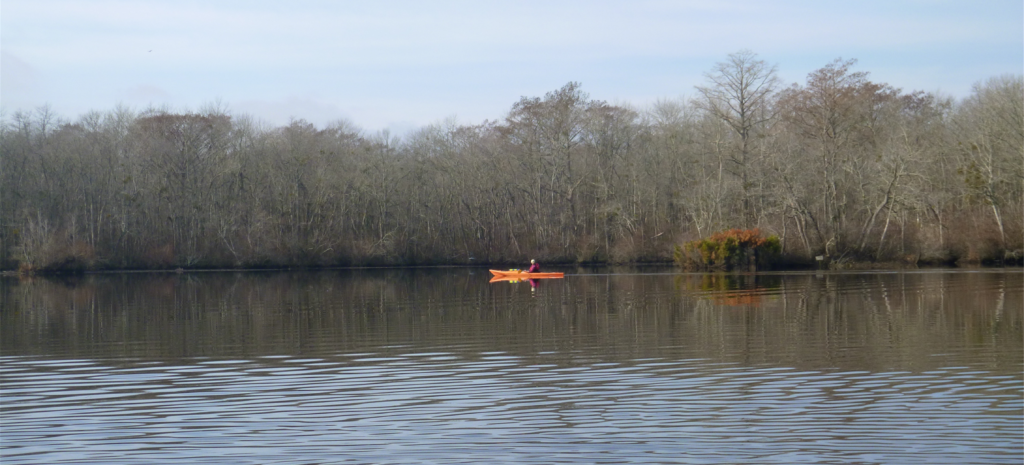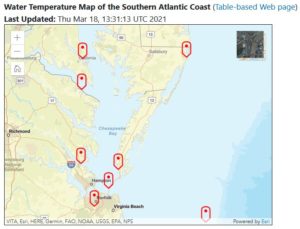
It’s starting to feel like paddling weather is returning and it’s impossible not to get excited! Many people haven’t pulled out their kayaks or SUPs since last fall, and people everywhere are itching to get out on the water. This is GREAT! But at the same time, early spring paddling comes with some hazards that should not be taken lightly.
While that first 75°F day feels so incredible after a long winter and going for a paddle just sounds good for the soul, it’s important to keep in mind that the water is still dangerously cold. We’re talking like 45°F! An unexpected fall into water that cold, without the protection of a wetsuit or drysuit, becomes immediately life-threatening and commonly results in swimming failure or sudden drowning. 
But that sounds super scary, and we’re not here to scare anybody from paddling. We’re here to educate about how to do it safely. That’s why we spoke with an expert, Moulton Avery, the Founder and Director of the National Center for Cold Water Safety.
Avery has an extensive paddling background that dates back to the 1970s and has written articles for many paddling magazines, including Sea Kayaker and Ocean Paddler.
When talking about the current 45°F water temperature in the Chesapeake Bay, Avery says “that doesn’t sound too cold to most people because they’re mentally comparing to air.” But our bodies react differently to cold air vs. cold water. While most people would consider a 45°F air temperature to be chilly, it’s nothing to really worry about as long as you’ve got a warm fleece or jacket on. On the other hand, being immersed in 45°F water has a profoundly different effect on the body: cold shock. Avery explains cold shock as “a complete loss of breathing control.” Falling into cold water without thermal protection triggers an immediate gasp reflex followed by hyperventilation, which is totally out of our control. “And these aren’t just little gasps like someone startled you. They are full lung inflations.” And if your mouth is underwater when this happens, it will result in disaster.
So now you may be thinking to yourself, “Okay, I’ll wait a few more weeks until the water is closer to 60°F.” Not so fast. Unless you have a wetsuit or a drysuit, you may want to wait until the water is even warmer. “Treat any temperature below 70°F with caution”, says Avery. “The International Olympic Pool Committee mandates water temperatures must be 77°F or above. Physiologically, that’s when your breathing starts to be affected.”
You may also be thinking to yourself, “I’m experienced, I’ve never fallen into the water while kayaking, I’ll be fine.” Understandable, but is that a risk you really want to take, given all you’ve just learned about cold water shock? Probably not! No matter how experienced of a paddler you are, and how long it’s been since you last fell in, it’s always smart to dress for the swim, not the paddle.
But now what? It’s beautiful weather, but too cold to paddle, and it’s going to take what seems like forever for the water temperature to climb to 70°F! Actually, not really. The average water temperature usually hits 70°F in the Chesapeake Bay by mid to late-May. And shallow creeks typically warm up even sooner than that. In fact, log onto NOAA’s handy water temperature map here, complete with real-time data.
Or on the other hand, why not get some cold water gear? Maybe you’re not quite ready to invest in a drysuit, but purchasing a wetsuit can enable you to safely begin your paddling season a little bit earlier.
If you choose to play it safe (and we sure hope that you do!), and you wait until that water temperature hits 70°F before paddling, don’t just sit around and stare at your empty kayak! Start planning your first adventure with our interactive water trail maps. And be sure to follow Virginia Water Trails on both Facebook and Instagram to get ideas and inspiration for your next coastal Virginia paddling trip!
Want more information about cold water safety? The National Center for Cold Water Safety offers free webinars on a variety of topics. Follow them on Facebook to see a schedule of events.
About the Author: Laura Scharle lives on the Eastern shore of Maryland and is a frequent paddler in coastal Virginia. She is a Virginia certified ecotour guide and is an independent marketing contractor with a focus in ecotourism and heritage tourism. Laura can be reached through our Eastern Shore ecotour guide listings.

